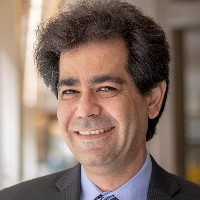Kourosh Zareinia

Associate Professor
Faculty of Engineering and Architectural Science
Department of Mechanical, Industrial and Mechatronics Engineering
Toronto, Ontario
kourosh.zareinia@torontomu.ca
Office:
(416) 979-5000 ext. 7688
Expert In
Biomedical tools and technologies
Filippov discontinuity solutions
Haptics in surgical training
Lyapanov stability analysis
Mechatronics
Robot-assisted neurosurgery
Robotics
Smart surgical tools
Surgical robotics
Surgical simulation
Technological and industrial innovation
Technology and intelligent systems
Theme: Health and wellbeing
Theme: Transformative technology
Bio/Research
Growing up, Kourosh Zareinia was always interested in machines that make our lives better. That interest led him to a career designing and developing robotic systems for a variety of medical applications, such as brain surgery, cognitive and physical rehabilitation, and the micromanipulation and ...
Click to Expand >>
Click to Expand >>
Bio/Research
Growing up, Kourosh Zareinia was always interested in machines that make our lives better. That interest led him to a career designing and developing robotic systems for a variety of medical applications, such as brain surgery, cognitive and physical rehabilitation, and the micromanipulation and microinjection of cells.
While improving people’s health is his number 1 goal, Zareinia is also motivated by the economic reality of an aging population drawing more and more on our health care system. For a solution, he looks to robotics. “Long term, robotics can both reduce health-care costs and improve the quality of care by standardizing medical methods and treatments,” he says. For example, in neurosurgery, the use of a haptic hand controller (a type of human-machine interface) can decrease surgeon training time while increasing accuracy and patient safety.
Currently, advancements in surgical technology lag behind other fields, says Zareinia. “By partnering with medical experts, I can help bring surgical technology and methods up to date to improve lives now and in the future.”
Click to Shrink <<
While improving people’s health is his number 1 goal, Zareinia is also motivated by the economic reality of an aging population drawing more and more on our health care system. For a solution, he looks to robotics. “Long term, robotics can both reduce health-care costs and improve the quality of care by standardizing medical methods and treatments,” he says. For example, in neurosurgery, the use of a haptic hand controller (a type of human-machine interface) can decrease surgeon training time while increasing accuracy and patient safety.
Currently, advancements in surgical technology lag behind other fields, says Zareinia. “By partnering with medical experts, I can help bring surgical technology and methods up to date to improve lives now and in the future.”
Click to Shrink <<